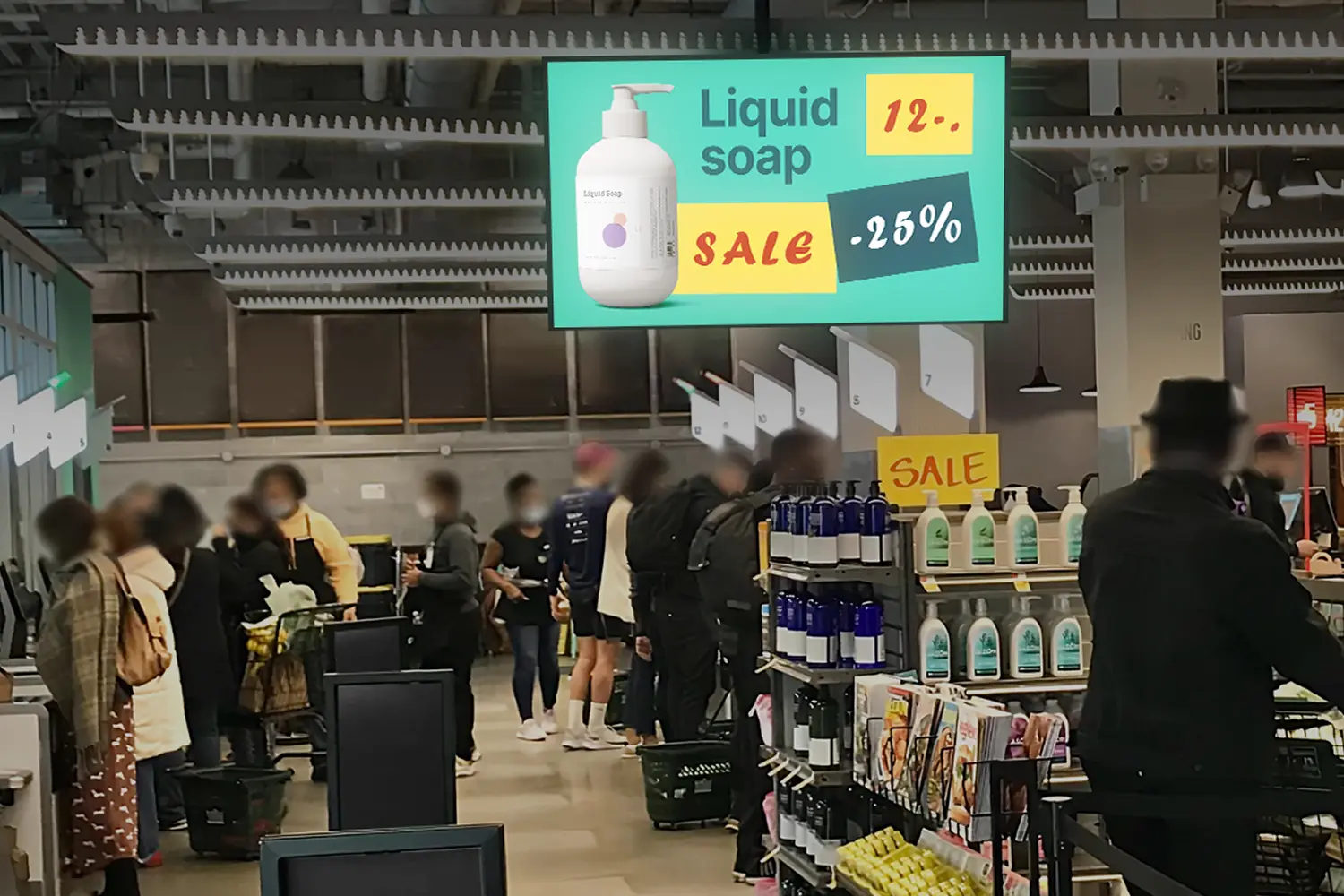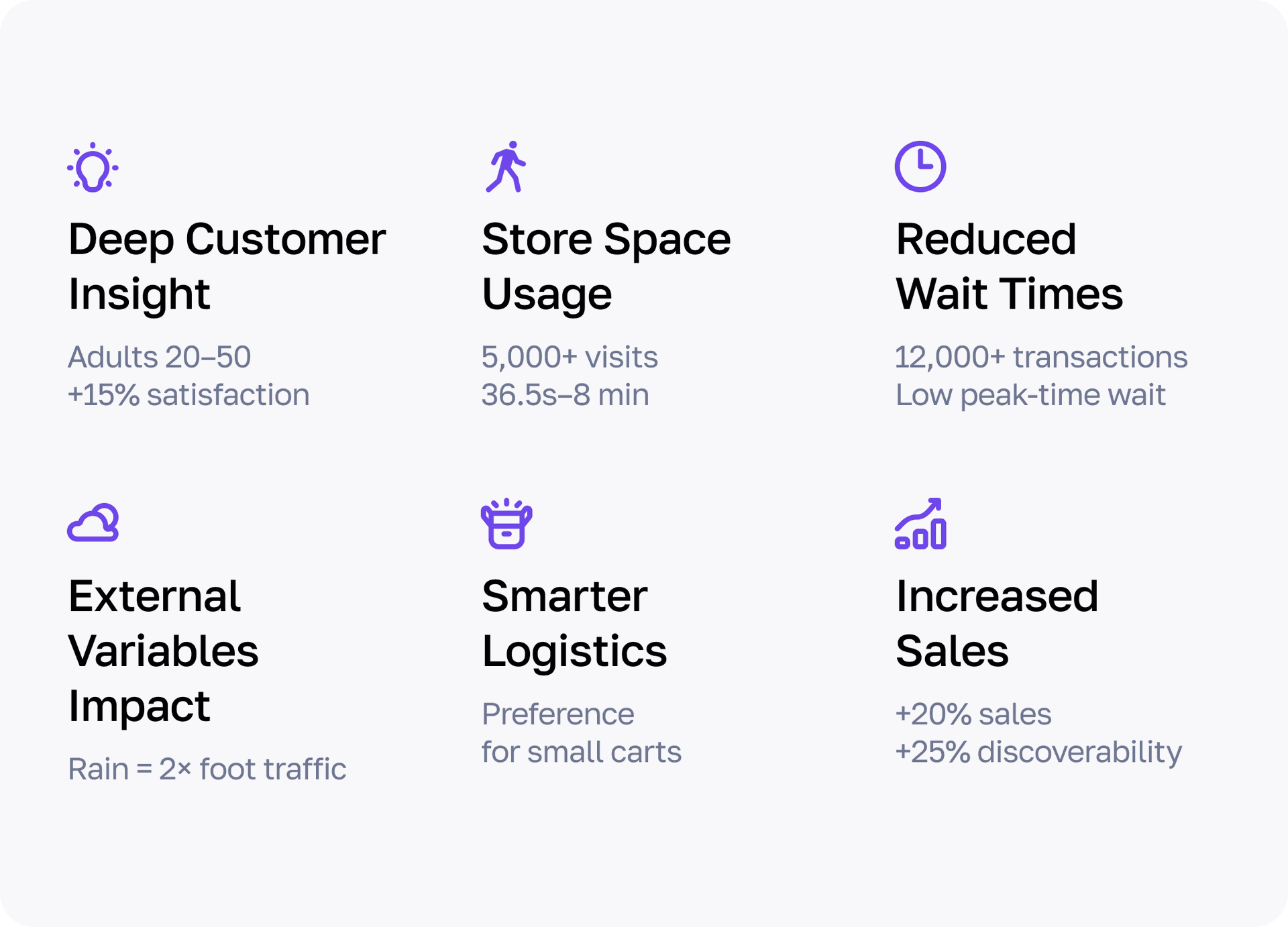While supermarkets collect vast amounts of sales data, this information only tells part of the story. The critical moments that drive purchasing decisions happen in the aisles—where customers pause, compare, and ultimately choose what to buy. However most retailers still rely on basic sales metrics, loyalty card data and expert guessing, missing crucial opportunities to optimize store layouts, enhance product placement, and craft targeted marketing strategies.
A prominent regional supermarket chain, operating over 50
locations, recognized this strategic blind spot. Despite possessing
comprehensive sales and loyalty card datasets, they lacked visibility
into the customer journey: how shoppers navigated their stores, which
promotions captured attention, and how dwell time varied across
different sections. Without these behavioral insights, critical
decisions about store design, product placement, and promotional
strategies remained dependant on guesswork.
To bridge this intelligence gap and unlock the hidden value in customer behavior, the retailer partnered with us to implement a audience analytics solution based on IoT computer vision
(video analytics). This data-driven approach, powered by AI VIsitors Counter cutting-edge technology, transforms invisible customer interactions into
actionable business intelligence, enabling evidence-based optimization
of the entire shopping experience.
The Solution: AI-Powered Customer Analytics
We deployed a complete solution using our technology, which included:
- Smart sensors strategically installed across two supermarket locations in Italy to capture real-time in-store behavior, fully compliant with GDPR privacy regulations and the EU AI Act.
- AI Analytics platform, which processed the collected data to deliver clear insights into visitor demographics (gender, age, facial expression and accessories) most visited areas, dwell times, and actual customer preferences.
- Raw analytics data that was used to create custom reports that focused specifically on areas of interest for the customer.

The solution was designed to address the supermarket’s most pressing in-store challenges. It focused on identifying the key areas that attract the most customer attention, allowing for smarter product placement and improved visibility. By constructing a detailed and accurate demographic profile of store visitors, the solution enabled more targeted decision-making. It also helped enhance operational efficiency by analyzing factors such as queue lengths, checkout times, and customer flow. Most importantly, the real-time data collection allowed for agile promotional strategies that could adapt instantly to emerging customer profiles and behaviors, ensuring marketing investments aligned precisely with actual shopping patterns rather than historical trends.
Results

Deep customer insight
The solution delivered a clear and actionable understanding of the supermarket’s primary customer base—adults aged 20 to 50, with a slight male skew and Millennials representing the dominant segment. This demographic clarity enabled highly targeted marketing efforts, contributing to a 15% increase in overall customer satisfaction.
Smarter use of store space
Visitor tracking highlighted the most frequently visited and high-engagement sections of the store. One key area saw over 5,000 visits, with customers spending an average of 36.5 seconds in high-traffic zones and up to 8 minutes in the most engaging sections. This allowed the retailer to optimize the layout and product visibility in these critical areas, boosting sales performance.
Reduced wait times and enhanced experience
The system analyzed customer flow, particularly at the checkout points, which helped to improve operational efficiency. The most visited register handled over 12,000 transactions, and the analysis of queue lengths helped minimize congestion, keeping average wait times low, particularly during peak hours, enhancing the overall shopping experience.
Proactive response to external variables
Behavior data showed a strong correlation between external conditions—like weather— and store traffic. On rainy days, foot traffic nearly doubled, which allowed the supermarket to better forecast demand and adjust staffing and promotions accordingly.
Clear preferences, smarter logistics
Customer behavior data revealed a strong preference for smaller shopping carts. This insight guided adjustments that improved in-store mobility and overall convenience, aligning operational design with shopper preferences.
Increased sales
By bridging the gap between sales data and real in-store behavior, Technology Innovation — powered by DISPL’s AI-driven analytics — helped the supermarket move from assumptions to knowledge. The solution transformed raw customer profiles into actionable insights, enabling smarter layout decisions, targeted promotions, and more efficient operations. As a result, the retailer not only improved customer satisfaction and shopping experience, but also achieved measurable business impact- “a 20% increase in sales and a 25% boost in product discoverability”.
This case underscores the power of combining advanced technology with a strategic retail vision to drive performance and unlock untapped growth potential.